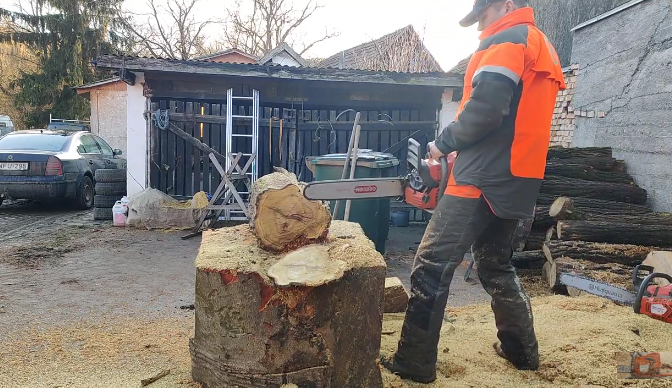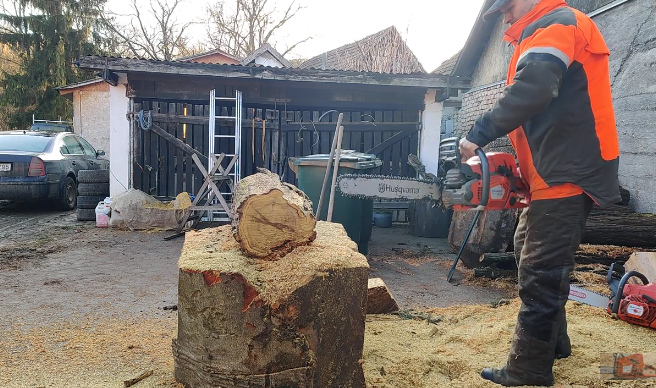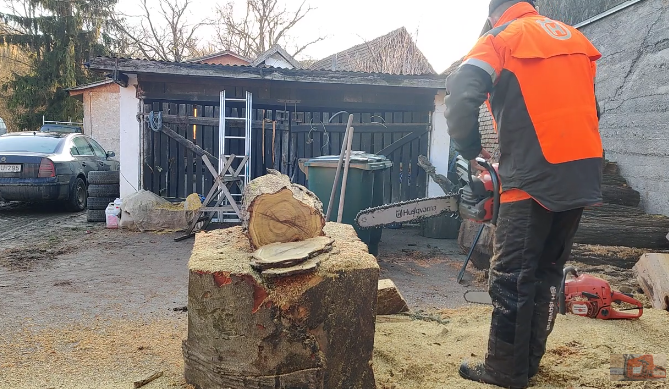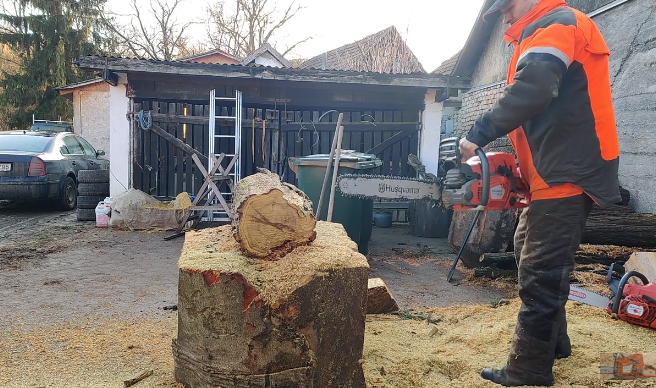
When it comes to professional-grade chainsaws, the Husqvarna 572 XP and Husqvarna 575 XP stand out as two of the most respected and high-performing machines available today. Designed for serious users—whether you’re in forestry, tree service, or intense land-clearing work—both models deliver impressive power, efficiency, and durability. But how do they compare when using a 20″ bar, various chains, and a 7-pin rim sprocket? Let’s dig deep into their specifications, performance, and user feedback.
Overview of the Husqvarna 572 XP
The Husqvarna 572 XP is one of the newer models in Husqvarna’s XP (Extra Performance) line, designed with modern features and built to handle tough jobs efficiently. It’s powered by a 70.6cc engine that delivers 5.8 horsepower, and it’s engineered for optimal airflow and cooling.
Key Features of the 572 XP:
- Engine: 70.6cc, 5.8 hp
- Weight (without cutting equipment): 14.5 lbs (6.6 kg)
- Recommended bar length: 15″ to 28″
- AutoTune™: Automatically adjusts engine performance
- Air Injection™: Keeps filters cleaner for longer
- LowVib®: Reduces vibration for operator comfort
- Magnesium crankcase: Built to withstand high RPMs
This saw is ideal for those who need reliability in demanding environments and prefer a saw that can adapt easily to different working conditions.

Overview of the Husqvarna 575 XP
While slightly older, the Husqvarna 575 XP is a classic favorite among professionals. It features a 74.6cc engine producing around 5.4 horsepower, and it’s known for its brute strength and toughness. Though it lacks some of the tech upgrades of the 572 XP, it makes up for it with raw performance and a sturdy build.
Key Features of the 575 XP:
- Engine: 74.6cc, 5.4 hp
- Weight (without cutting equipment): 14.5 lbs (6.6 kg)
- Recommended bar length: 16″ to 28″
- Smart Start®: For easier starts
- Heavy-duty air filter: Extends engine life
- Three-piece crankshaft: Built for extreme durability
This saw is particularly well-suited for loggers and arborists who prioritize consistent cutting power and don’t necessarily need the latest digital engine management.
20″ Bar – The Sweet Spot
Both saws can handle up to 28″ bars, but many professionals choose a 20″ bar for an ideal balance of power, control, and maneuverability. A 20″ bar keeps the saw light enough for long jobs, while still providing enough length for felling medium to large trees and bucking logs efficiently.
- Benefits of a 20″ bar:
- Improved agility and reduced fatigue during long workdays
- Easier control in tight or elevated spaces
- Better match for chains with higher RPM requirements
- Less strain on the engine, promoting longer saw life
On both the 572 XP and 575 XP, a 20″ bar works exceptionally well, especially when paired with the right chain and sprocket setup.

Choosing the Right Chain
The chain you choose can drastically affect cutting speed, smoothness, and durability. For both the 572 XP and 575 XP running a 20″ bar, you’ll typically be using a .325″, 3/8″, or .404″ pitch chain. Most professionals using this setup prefer the 3/8″ pitch, .050″ gauge chain for durability and cutting performance.
Popular Chain Options:
- Husqvarna X-Cut C85 or SP33G: Excellent for professional felling, offering fast and precise cuts with durability.
- Oregon EXL: Aggressive chisel chain ideal for fast cutting in hardwood.
- Stihl RS or RM: These full-chisel or semi-chisel chains are compatible and widely used for high performance.
When choosing your chain, also consider the wood type (hardwood vs softwood), cutting conditions (dirty vs clean wood), and your experience level—chisel chains cut faster but require more sharpening and experience to use safely.
The 7-Pin Rim Sprocket – Why It Matters
Both the 572 XP and 575 XP can be outfitted with a 7-pin rim sprocket, which is a favorite among many professionals who want increased chain speed. A rim sprocket design is preferred over a spur sprocket for its smooth chain engagement and easy replacement.
- Benefits of a 7-pin rim sprocket:
- Increases chain speed for faster cutting
- Slightly less torque but higher RPMs
- Allows for better fine-tuning of cutting performance
- Easy to replace when worn out
A 7-pin sprocket is best when paired with a sharp, efficient chain and a moderate bar like the 20″. If you’re cutting harder wood or thicker trunks regularly, some may choose to drop to a 6-pin sprocket to regain torque, but the 7-pin is excellent for most users who want a fast, clean cut.

Performance Comparison: 572 XP vs. 575 XP with 20″ Bar, Chain, and 7-Pin Rim
| Feature | Husqvarna 572 XP | Husqvarna 575 XP |
|---|---|---|
| Engine Power | 5.8 hp | 5.4 hp |
| Displacement | 70.6cc | 74.6cc |
| Weight | 14.5 lbs | 14.5 lbs |
| Smart Features | AutoTune, Air Injection | Smart Start, Heavy-duty Filter |
| Chain Speed (with 7-pin) | Faster RPM, cleaner cut | Slightly slower, more torque |
| Fuel Efficiency | Higher due to AutoTune | Lower |
| Vibration Dampening | LowVib® | Standard |
The 572 XP feels more refined and is better suited for users who want efficiency, smoother operation, and lighter fuel usage. The 575 XP, on the other hand, feels more rugged and may appeal to those who prioritize raw performance and simplicity.
User Feedback & Real-World Usage
Professional loggers and arborists often say:
- The 572 XP starts easier, especially in cold weather, and runs cooler during prolonged work.
- The 575 XP is extremely reliable, even after years of hard use, but feels slightly heavier in the hand.
- With a 20″ bar and 7-pin sprocket, the 572 XP offers faster and more precise cuts, making it better for high-production settings.
- The 575 XP has a “brute force” reputation—less refined, but strong and dependable.

Final Thoughts
Choosing between the Husqvarna 572 XP and the Husqvarna 575 XP, especially when outfitted with a 20″ bar, the right chain, and a 7-pin rim sprocket, ultimately comes down to your personal needs and style of work.
If you value cutting-edge technology, efficiency, and smooth handling, the 572 XP is hard to beat. However, if you lean toward simplicity, long-term durability, and traditional feel, the 575 XP remains a worthy choice.
Both saws are capable workhorses, and with the right setup, they can handle almost anything thrown at them—making your time in the woods or on the job site faster, smoother, and more productive.


